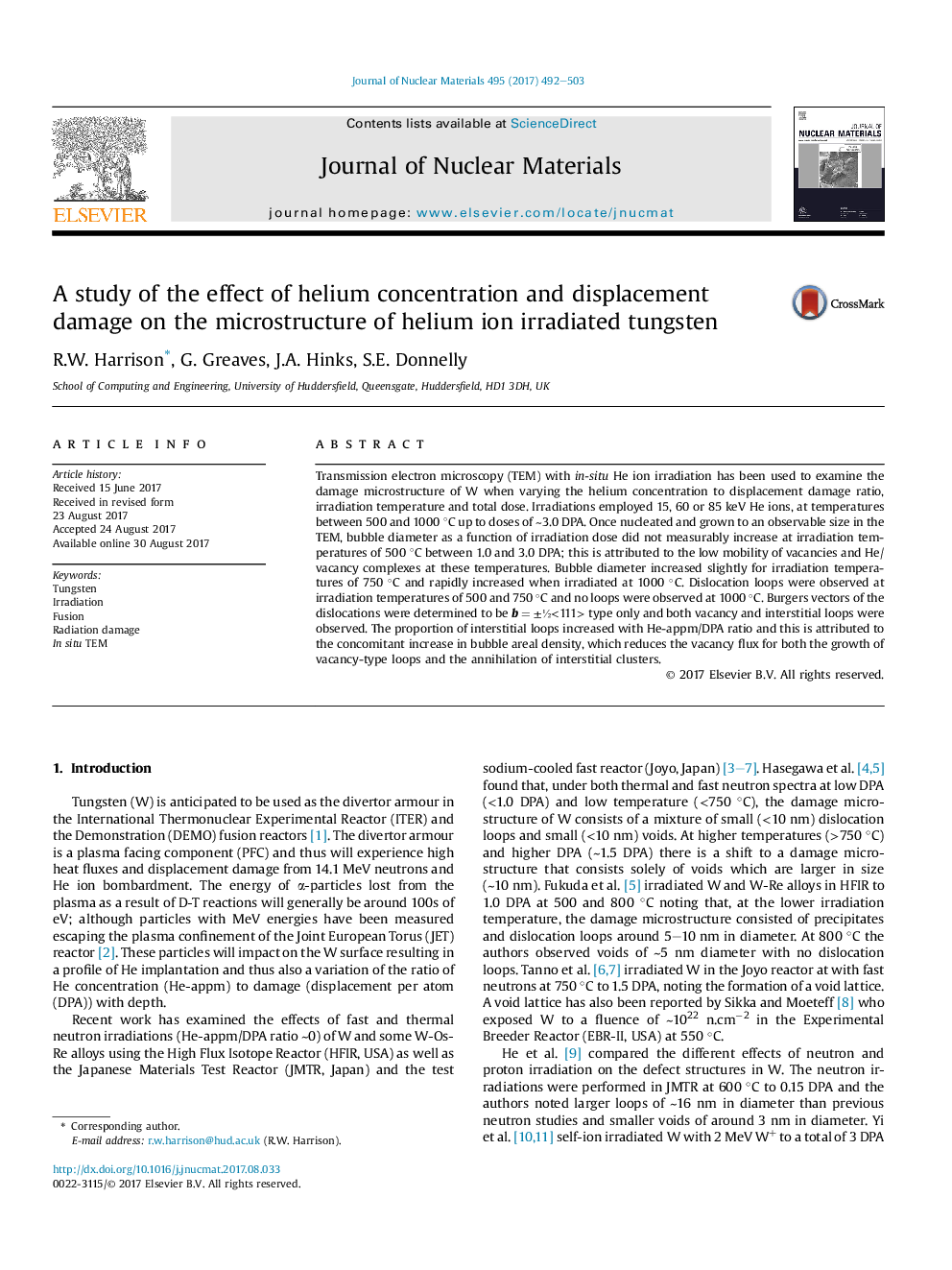| Article ID | Journal | Published Year | Pages | File Type |
|---|---|---|---|---|
| 5453886 | Journal of Nuclear Materials | 2017 | 12 Pages |
Abstract
Transmission electron microscopy (TEM) with in-situ He ion irradiation has been used to examine the damage microstructure of W when varying the helium concentration to displacement damage ratio, irradiation temperature and total dose. Irradiations employed 15, 60 or 85 keV He ions, at temperatures between 500 and 1000 °C up to doses of â¼3.0 DPA. Once nucleated and grown to an observable size in the TEM, bubble diameter as a function of irradiation dose did not measurably increase at irradiation temperatures of 500 °C between 1.0 and 3.0 DPA; this is attributed to the low mobility of vacancies and He/vacancy complexes at these temperatures. Bubble diameter increased slightly for irradiation temperatures of 750 °C and rapidly increased when irradiated at 1000 °C. Dislocation loops were observed at irradiation temperatures of 500 and 750 °C and no loops were observed at 1000 °C. Burgers vectors of the dislocations were determined to be b = ±½<111> type only and both vacancy and interstitial loops were observed. The proportion of interstitial loops increased with He-appm/DPA ratio and this is attributed to the concomitant increase in bubble areal density, which reduces the vacancy flux for both the growth of vacancy-type loops and the annihilation of interstitial clusters.
Related Topics
Physical Sciences and Engineering
Energy
Nuclear Energy and Engineering
Authors
R.W. Harrison, G. Greaves, J.A. Hinks, S.E. Donnelly,
